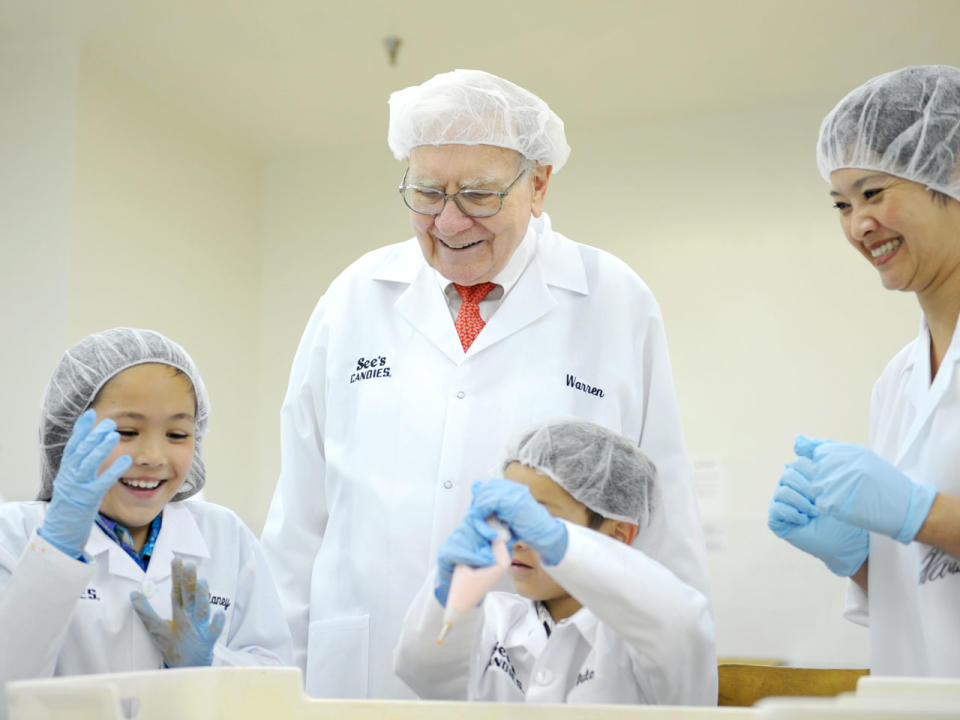Why Warren Buffett's candy company canceled its East Coast expansion

Every year at Berkshire Hathaway’s (BRK-A, BRK-B) annual meeting, there’s a strong chance that either Warren Buffett or his business partner Charlie Munger will give a shout-out to a small-but-beloved chocolate maker Berkshire acquired in 1972: See’s Candies.
Buffett and Munger frequently cite See’s as a great example of a company that requires low capital investment, yet grows steadily, and brings in cash that Berkshire has invested in its other companies. (Of course, Buffett also loves See’s because he has an infamous sweet tooth.) They see investing lessons in See’s. As Buffett told Fortune in 2012, “We have made a lot more money out of See’s than shows from the earnings of See’s, just by the fact that it’s educated me, and I’m sure it’s educated Charlie too.”
When Berkshire bought See’s Candies for $25 million, See’s did roughly $30 million in annual sales and made $4.2 million in annual profit. By 2014, See’s had annual sales of more than $400 million, and profits of more than $82 million. (See’s declined to share more recent revenue figures.) Over the 45 years that Berkshire has owned See’s, the candy company has brought Berkshire more than $2 billion in profit.
And yet, See’s isn’t super well-known outside of the West Coast. Its dual headquarters are in Los Angeles and San Francisco, and the lion’s share of its 250 stores are in California.
Back in 2012, See’s mapped out a plan to change that. CEO Brad Kinstler, a former insurance CEO tapped by Buffett to run See’s in 2005 (and still there today), formed an ambitious expansion plan. The aim was to open new See’s stores in Florida, Georgia, Maryland, and Washington, DC.
That didn’t happen; there still aren’t See’s stores in any of those places. The expansion of See’s to the East Coast fizzled. The reason? The broader demise of brick-and-mortar retail.
“Our hope was to develop more markets to the East,” Kinstler now tells Yahoo Finance. “But the brick-and-mortar and the indoor mall environment has changed the view we have on the potential to add new trade areas. Foot traffic in these more traditional settings is an impediment to new trade area success.”
That’s putting it mildly. Physical retail in America is in a death spiral. Urban Outfitters CEO Richard Hayne says the retail bubble “has now burst.”
Sports Authority, City Sports, Eastern Mountain Sports, Sports Chalet, Bob’s Stores, and Golfsmith all filed for bankruptcy. Sears, which also owns Kmart, warned that it risks going out of business. Aeropostale filed for bankruptcy. Teen apparel brand Bebe shut all its stores.
To be sure, those are all apparel chains, while See’s is a confectioner. But See’s is vulnerable to the same trend facing all retailers with large footprints in shopping malls.
See’s did open its first ever New York store in January of this year, in Manhattan’s West Village. But it is a licensee shop, not owned or operated by See’s.
The company is now sticking to a West Coast-focused strategy with regard to physical stores. “See’s is a well-known favorite for West Coast residents,” says Kinstler. “See’s primary focus is to add new locations in our Western trade area.”
The good news for See’s: it has an extremely strong, recognizable brand in California, and more than 70% of its orders come from its website, so it could stand to become less reliant on physical stores anyway. No one is saying the company is in danger of going out of business—it just isn’t about to invade the East Coast chocolate market any time soon.
Buffett still adores the company. Don’t be surprised if he mentions it at the Berkshire meeting again this year.
—
Daniel Roberts covers sports business, tech, and media at Yahoo Finance. Follow him on Twitter at @readDanwrite.
Read more:
Buffett on buying bitcoin: ‘That is not investing’
Here’s why Buffett and Munger love companies like See’s Candies
Meet the West Virginia steelworker who won $100,000 in Buffett’s March Madness contest
What do Warren Buffett, running shoes, and zombies have in common?

